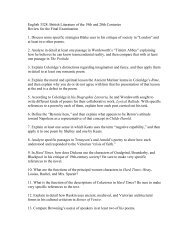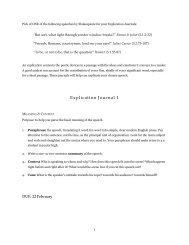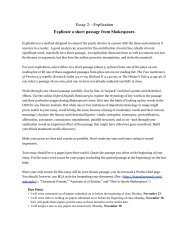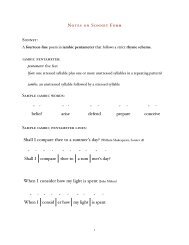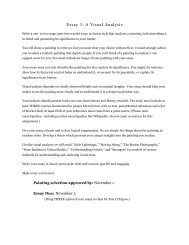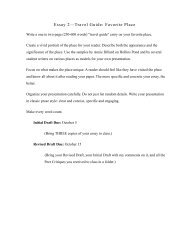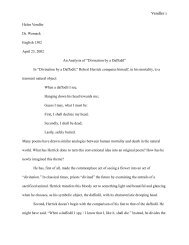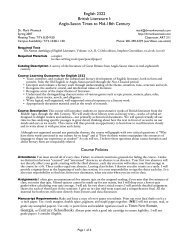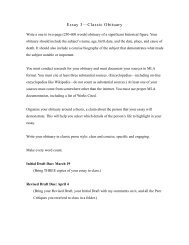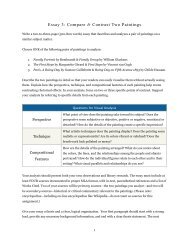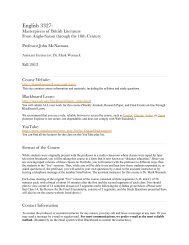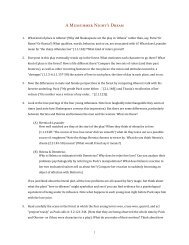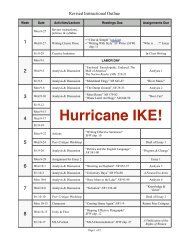Assignment for Essay #2 Write a stylistic analysis ... - Dr. Mark Womack
Assignment for Essay #2 Write a stylistic analysis ... - Dr. Mark Womack
Assignment for Essay #2 Write a stylistic analysis ... - Dr. Mark Womack
Create successful ePaper yourself
Turn your PDF publications into a flip-book with our unique Google optimized e-Paper software.
1. Read the passage <strong>for</strong> meaning. Pay attention to the sentence, not the line, as the principal unit of organization.<br />
Find the subject and verb. Forget, <strong>for</strong> the moment, about the poetry.<br />
2. Try to summarize the main idea or ideas. (Do this in writing: having to commit conclusions to paper <strong>for</strong>ces you<br />
to decide what you think. Don't include your summary in your essay.)<br />
3. Outline the progression of ideas, identifying major sections. Is there a clear system of organization Are there<br />
antitheses (there usually are in Shakespeare) Repetitions Indirections<br />
4. Is irony a factor Is there, in other words, a discrepancy between the speaker's words and meanings<br />
5. Examine the diction of the passage. After reading <strong>for</strong> denotation (straight<strong>for</strong>ward meaning), think about<br />
connotation. Look up important words in the Ox<strong>for</strong>d English Dictionary to determine their currency in the<br />
Renaissance and to discover implied significance. Notice connections among roots or words, as well as<br />
alternative or archaic (but still applicable) meanings.<br />
6. Think about wordplay, remembering that puns need not be funny. Consider multiple senses of words.<br />
7. Notice imagery. Is it particularly abundant unusually sparse Do the images suggest patterns or <strong>for</strong>m clusters<br />
How do the images promote or clarify the subject<br />
8. What about figurative language: similes, metaphors, symbols Analyze metaphors with an eye on the tenor (the<br />
thing being described), the vehicle (the thing used to describe it), and the connotations of the comparison.<br />
9. Are there classical, biblical, or historical allusions What do they contribute<br />
10. Do you find understatement, hyperbole, personification, paradox<br />
11. Study the syntax, the arrangement of words into sentences. Is word order normal or inverted Do sentences<br />
seem simple or complex<br />
12. Examine meter as you have syntax. Is it regular or not Look <strong>for</strong> run-on lines or important instances of caesura.<br />
13. Pay attention to musical devices such as alliteration, rhyme, assonance, consonance, euphony, cacophony,<br />
onomatopoeia. How do they contribute to the passage’s effect on a reader<br />
14. For every device, the essential question is “How does it work”



